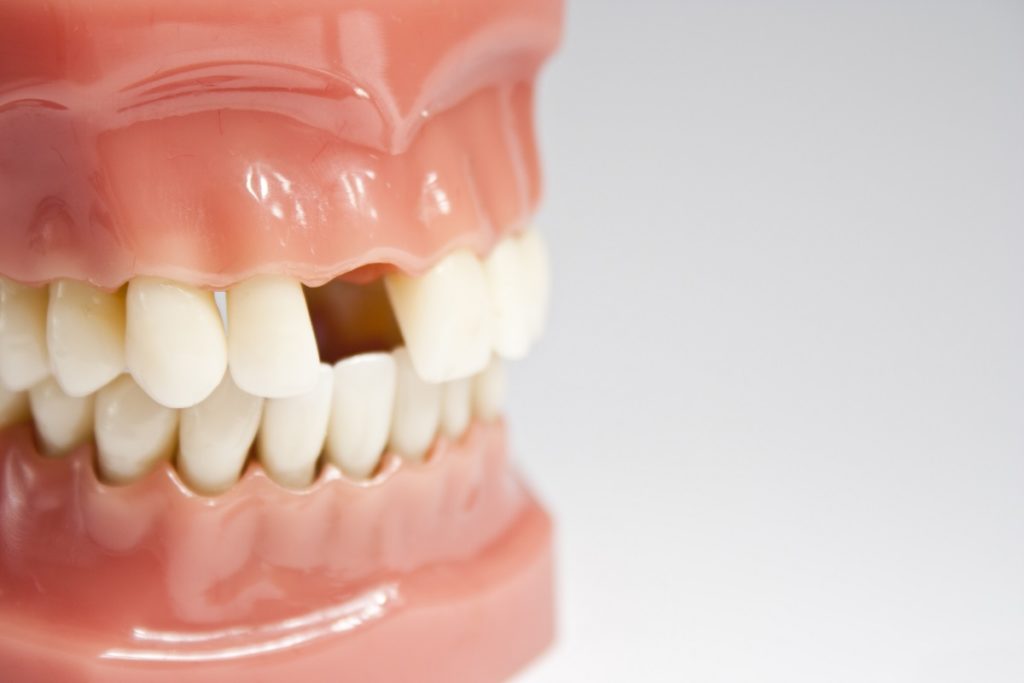
Replacing missing teeth is about more than aesthetics. The longer a tooth is missing, the more damage is done to the neighboring and underlying supportive structures. The good news is, bridges and implants can restore your beautiful smile.
Below Dr. Santoro of Village Center Dentistry discusses the unique advantages and disadvantages of these options.
What’s a Dental Bridge?
A dental bridge is true to its name: it’s a bridge that covers the gap between missing teeth. In practical terms, a dental bridge consists of one or more artificial teeth connected to anchored teeth on either side of the bridge.
The teeth or implants on either side of the bridge (called the abutment teeth) are covered with a cap that attaches to the bridge. Depending on where the missing teeth are located, a dental bridge may use only a single anchoring tooth (called a cantilever bridge).
What are the Benefits and Drawbacks of a Dental Bridge?
The biggest benefit of a bridge is it’s fast! It is the quickest way to replace missing teeth. There’s no need to undergo a surgical procedure or wait for bone grafts (which are required in some implant cases) to heal.
There are a few drawbacks to having a bridge. One, it’s not a permanent solution to missing teeth. Bridges wear down and place significant strain on the surrounding teeth. If one of the anchoring teeth gets a cavity, then the whole bridge needs to be replaced, which can be costly. Second, bridges do not help prevent bone loss that can occur when a tooth falls out and can actually cause increased bone loss due to the potential difficulties in cleaning underneath a bridge.
What are Dental Implants?
Dental implants act as replacement teeth, installed directly into the jawbone. An oral surgeon or periodontist prepares a special dental post that attaches permanently into the jaw and becomes part of the bone’s anatomy. The implant post then integrates with the bone. Once the bone and post have healed, a structure called an abutment is screwed into the implant post and a crown is attached to the top of the abutment. The most ideal abutment is custom and will allow the implant to mimic your bone structure as much as possible. An implant is most like your natural teeth.
Advantages and Disadvantages of Dental Implants
The biggest advantage of dental implants is longevity. Installed correctly, implants should last a lifetime. Also, chewing on the implant keeps the underlying jawbone stimulated and reduces the chance of it deteriorating.
Disadvantages of implants include cost and the time it takes for implants to integrate with the bone.. Implants require several procedures to plan and place, and it can take up to 6 to 9 months to heal in between treatment stages. If bone loss is present, you may require bone grafting in the jaw, lengthening the treatment time.
Making the Choice between Bridges or Implants
Cost, recovery time, and your own unique dental needs make choosing between bridges or implants a difficult choice. Please contact Village Center Dentistry here to schedule a consultation with Dr. Santoro today.
